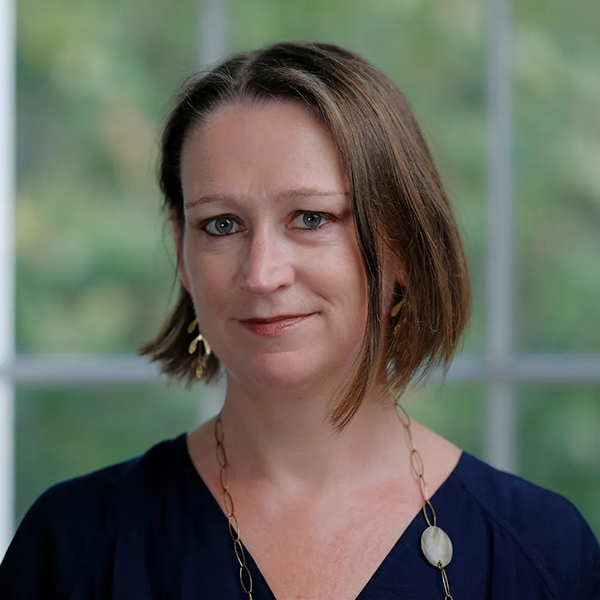
‘Blurb’ sounds like a cross between ‘burble’, ‘burp’ and ‘blur’. The word implies something inconsequential: at best, harmless; at worst, a waste of your time. But the importance of the text on a book’s cover should not be underestimated. Research reported in the Bookseller suggests that the words on the cover are one of the most important factors people take into account when buying a book. An attractive jacket may tempt the reader to pick up a book, but it’s that glance at the blurb – in a bookshop or online – that finally determines whether it’s bought.
Some publishers employ copywriters to produce blurbs, but in most cases the blurb is a collaboration by author and editor. The editor sends a lively paragraph for the approval of the author, who winces in embarrassment, cuts out all mention of ‘gripping’ and ‘unputdownable’ and replaces them with words like ‘evanescent’ and ‘illuminating’. The editor tells the author that the new version is twice the allowable length and utterly incoherent, and so the dialogue continues until one or the other becomes too jaded.
As this is pretty much the only part of the commercial publishing process over which the author has some control, it makes sense to acquaint ourselves with the unsubtle art of blurbology. For self-publishers, managing their own production and marketing, it is even more important to know how to craft this crucial piece of text.
After canvassing opinion from writers, publishing professionals and members of the reading public, I’ve concluded that there are four universally accepted rules of the blurb.
Keep it short
Whatever is said must be said as succinctly as possible. It’s lunchtime. Your potential reader is in a hurry. You only have a few seconds to grab their interest. Yet plot synopses sometimes fill the entire front flyleaf of a hardback, and then break off in mid-sentence to resume a meandering path on the back flyleaf.
Keep it simple
‘A blurb should have a maximum of two or three character names,’ says Diana Beaumont, a senior editor at Transworld. ‘Any more and it becomes too complicated for the buyer to grasp.’ This may explain why my second novel, Melting, sold fewer copies than my other two. My self-written blurb contained four character names plus Tom Jones.
And mine’s not the only one. This dense confusing blurb is for Haruki Murakami’s Norwegian Wood: ‘When he hears her favourite Beatles song, Toru Watanabe recalls his first love Naoko, the girlfriend of his best friend Kizuki. Immediately he is transported back almost 20 years to his student days in Tokyo, adrift in a world of uneasy friendships, casual sex, passion, loss and desire – to a time when an impetuous young woman called Midori marches into his life and he has to choose between the future and the past’. Confused?
Summarise the story
The blurb should give an idea of the plot. ‘It should tell the story in miniature,’ says Euan Thorneycroft, a literary agent at Curtis Brown. ‘But it shouldn’t give too much away’. One reader told me she thinks of blurbs as being like the labels on tins of food. She wants to check the ingredients before she’ll buy. But this can present problems. ‘It’s easy to write a thumbnail for a plot-driven book,’ says Thornycroft. ‘Much trickier for a character-centred literary novel.’
Tessa Hadley’s excellent debut Accidents in the Home does not follow a conventional narrative pattern – and the blurber’s anxiety about this shouts out from the back cover in words like ‘complicated’, ‘complicatedly’, ‘embarrassing’ and ‘fraught’. This blurb reads more like a critical review than something to entice the casual browser.
Hint at the style
The blurb should offer a taste of the book, indicating the genre and tone. The strapline ‘A cat, a flat and a couple who think its over’ on Mike Gayle’s His ’N Hers shows succinctly that the novel is a romantic comedy. ‘Gripping’, ‘pacy’ and ‘unputdownable’ are effective labels for airport thrillers – buyers who are put off by such clichés are not the intended readers.
Once again, it’s the literary novel that presents the biggest problem for the blurber. How can you convey something subtle and non-generic in a manner that also makes it sound readable? Blurbers’ anguished attempts have spawned numerous tortured taglines such as, a novel ‘of love and redemption’ or ‘of love, loss and betrayal’ or ‘of friendship and desire’. Other staples are sociological references: ‘a dark urban tale’ or ‘a head-on collision with America’s Greatest Dream and its worst nightmare’ (from the cover of Bret Easton Ellis’ American Psycho).
Some industry professionals are addicted to the blurb cliché. Susanna Clark, author of Jonathan Strange and Mr Norrell and an ex-publishing employee, recalls one colleague’s obsession: ‘He was desperate to work “searing indictment” into our blurbs, but unfortunately our books were all about curtains or gardening or needlepoint.’
Perhaps we should embrace the blurb cliché. Its alternative – the attempt at originality – can be truly frightening. Suzannah Dunn (author of six novels, including The Queen of Subtleties) told me about a blurb her former editor wanted to use. ‘He’d called me “a carpenter of the soul” and said “Dunn takes an emotional spirit-level to people’s lives”’. Dunn vetoed it. Another memorable horror, which did make it into print, is this from an early edition of Kate Atkinson’s Behind the Scenes at the Museum: ‘It hops with sprightly omniscience from past to future and back again’.
The Bookseller’s research reveals that book buyers distrust hype of this kind. Although they want to know what a book is about, and something about the author’s style or similarity to another author they might like, they dislike the publishers’ overblown plaudits and what they see as buddy-buddy puffs from other authors.
The readers I spoke to agreed, particularly about author-endorsements, such as ‘Stunning – Fay Weldon’. ‘They just show who the author’s mates are, or who owes the publisher a favour’ – though others said that they would be drawn to a book that was praised by a writer they admired.
According to one publisher I spoke to, who commissioned her own research on the topic, readers don’t like review quotes either. This came as a surprise to me. In common with most authors, I fixate on the reviews when my books come out and want them plastered all over subsequent editions. My view was echoed by Diana Beaumont at Transworld: ‘Why should anyone choose a book by an author they’ve never heard of if there aren’t any quotes on the jacket to give an “objective” view?’
Antony Topping, literary agent with Greene and Heaton, feels the currency of review quotes has been devalued through overuse and manipulation. ‘You might see, “Amazing – Observer” emblazoned across a book’s cover, and then discover that the reviewer actually said, “this is the most amazingly awful novel I’ve ever read”. Everyone’s heard those stories. If we could establish a rule whereby quotes could only be used with the specific approval of the reviewer, then perhaps people could start believing them again.’
The majority of the readers I talked to said that review quotes did make a positive difference, but that they were more strongly convinced by perceptive, specific and interesting quotes like, ‘his novels have the brazen, daring timidity of love letters you know you’ll never post’ (a Sunday Times reviewer’s comment on Nicholson Baker’s The Fermata).
They were also influenced by the source of reviews. One reader of literary fiction told me that a quote from the Guardian would be attractive but a quote from the Daily Mail would put her off, because it would make her assume that the book shared the right-wing politics of that newspaper. Perhaps publishers should continue to use review quotes, but with more care, taking into consideration the likely values of the book’s intended readership.
Meirion Todd, sales representative for Orion and a former paperback fiction manager at Hatchard’s in Piccadilly, has clear views on the composition of jacket copy. ‘Fifty per cent of the blurb should be plot description and fifty per cent should be the publisher telling you why you should buy the book,’ he says. And he has an immediate answer to the suggestion that publishers’ own hype statements such as, ‘This is a writer at the height of his powers’ or ‘Better than John Grisham’ are so much hot air. ‘Why would you want to buy a book when even its editor won’t speak up for it? We’re in the business of selling books, and we should remember that. You back your view up with a couple of strong, simple quotes from reviews. And the best one-line review quote – just one – should go on the front cover.’
ANNA DAVIS is the author of five novels: The Jewel Box, The Shoe Queen, Cheet, Melting and The Dinner, as well as short stories and numerous articles for national newspapers and magazines. She's also the Managing Director of the Curtis Brown Creative writing school.
This article appeared originally in Issue 25 of Mslexia. Some of the people quoted are no longer be in the roles mentioned here.

